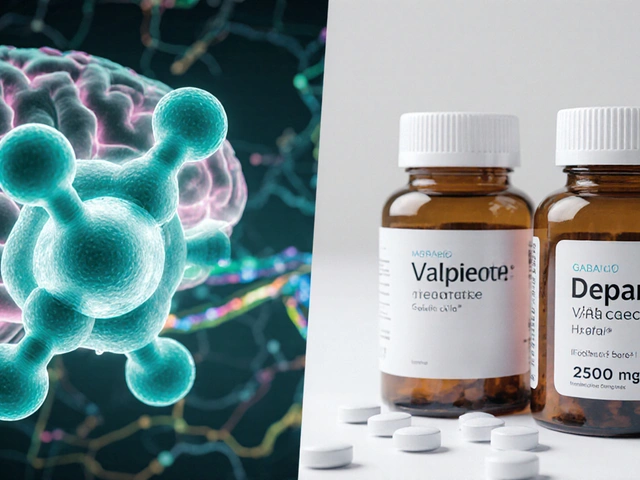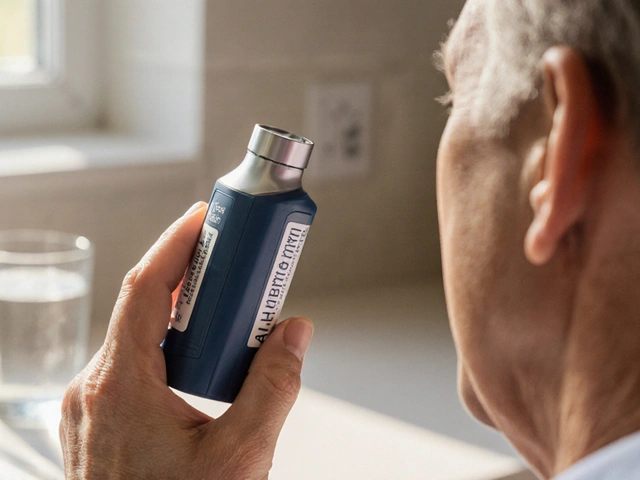If you think “hemp” means CBD, you’re missing the real star: the seed. The wellness world is obsessed for a reason-hemp seed foods deliver protein, a rare omega-6 to omega-3 balance, and skin-loving fats in a form your body actually uses. This isn’t a miracle cure, and it won’t replace medication. But if you want a simple, plant-based way to support heart health, skin, hormones, and daily energy, Canadian-grown hemp is low-effort, high-return.
- TL;DR: Hemp seed products (hearts, oil, protein) are nutrient-dense, non-intoxicating, and easy to add to meals-think salads, smoothies, oatmeal.
- What it can do: Boost omega-3 intake (ALA), balance omega-6:3, add gentle protein, and support skin barrier function. Early data also hints at PMS comfort via GLA.
- What it can’t do: It’s not CBD, won’t get you “high,” and won’t cure disease. It complements-not replaces-medical care.
- Pick the form for your goal: Hearts for daily protein, oil for omegas and skin, protein powder for smoothies and workouts.
- Safety: Choose cold-pressed oil in dark glass, check a third-party COA, store oil in the fridge, and start with small servings if you have a sensitive gut.
What Canadian hemp really is (and why it’s on every shelf)
Let’s clear up the biggest confusion. Hemp seed products are foods and dietary supplements made from the seeds of Cannabis sativa plants legally defined as “hemp” (≤0.3% THC by dry weight in Canada and the U.S.). The seeds themselves don’t make THC or CBD. Any cannabinoid residue comes from plant surface contact and should be “non-detectable” in quality products. That’s why hemp seed oil from grocery stores won’t affect your head-or your drug test.
So, what’s inside the seed? A lot of what most of us don’t get enough of:
- Essential fats: Linoleic acid (LA, omega‑6) and alpha‑linolenic acid (ALA, omega‑3) in a naturally balanced ratio near 3:1. That’s a sweet spot dietitians aim for because it supports normal inflammation signaling and heart health. Hemp seed oil also contains a modest amount of gamma‑linolenic acid (GLA), a specialized omega‑6 linked to skin barrier support and PMS comfort at adequate intakes.
- Protein: Hemp seed protein is rich in edestin and albumin-gentle on digestion. Three tablespoons of hemp hearts typically deliver about 9-10 g protein, plus minerals like magnesium and iron.
- Phytonutrients: Phytosterols (cholesterol helpers), tocopherols (vitamin E), and polyphenols that help protect the oil from oxidation and support cells.
What does the science say? Health Canada’s Cannabis Act and Industrial Hemp Regulations classify hemp foods as non-intoxicating, sold like any other food. Nutrition-wise, the National Academies’ Dietary Reference Intakes set targets for ALA (the plant omega‑3 in hemp). A 2005 randomized study (Callaway et al.) found hemp seed oil improved essential fatty acid profiles and skin symptoms in people with atopic dermatitis compared to olive oil. Reviews in Nutrients and the Journal of Agricultural and Food Chemistry detail hemp’s fatty acid profile and GLA content. And yes, Agriculture and Agri‑Food Canada notes hemp grows well with fewer inputs and supports crop rotation, which is why you’re seeing more Canadian acreage.
Reality check on benefits: ALA from plants can convert only modestly to EPA/DHA (marine omega‑3s). If you don’t eat fish or algae oil, hemp boosts your omega‑3 baseline but doesn’t fully replace EPA/DHA for everyone. That’s not a flaw-it’s just how human metabolism works (see NIH Office of Dietary Supplements’ omega‑3 fact sheets). Think of hemp as the daily foundation; add fish or algae when you need the extra.
Why Canada? The country has strict seed certification, traceability, and cold‑pressing standards adopted by reputable producers. Cold climates favor oil stability and taste. Plus, Canadian growers have led the category since the early 2000s, so quality and consistency are high. If you care about clean, tested, non‑intoxicating sources, Canadian hemp is an easy win.
How to choose and use Canadian hemp supplements (step‑by‑step)
Before you click “add to cart,” match the form to your goal. Then use these tight, practical steps.
- Pick your goal
- Better omega balance and skin: Choose cold‑pressed hemp seed oil.
- Everyday protein without bloat: Choose hulled hemp hearts.
- Smoothie-friendly protein boost: Choose hemp protein powder (often 50-75% protein by weight).
- Read the label like a pro
- Look for “cold‑pressed,” “unrefined,” and “first press” on oil. Avoid “refined” if you want full phytonutrients.
- Hearts should list only “hulled hemp seeds.”
- Protein powder: Check protein per serving and fiber; 15-20 g protein per scoop is typical for 25-35 g scoops.
- COA (certificate of analysis): The best brands share batch tests for peroxide value (freshness), heavy metals, and cannabinoids (THC/CBD non‑detectable).
- Check origin and packaging
- Origin: Canada-grown and pressed is a good quality signal in 2025.
- Packaging: Dark glass for oil, oxygen barrier pouches for hearts and powder.
- Freshness date: Choose the newest batch. Oil is fussy-freshness matters.
- Do a quick taste test
- Good oil tastes nutty and clean, a touch grassy. If it’s bitter, fishy, or metallic, it may be oxidized. Pass.
- Hearts should be soft, creamy, and slightly sweet-not chalky.
- Use the right dose and timing
- Hemp hearts: 2-3 tablespoons daily gives roughly 9-10 g protein plus healthy fats. Sprinkle on breakfast to keep you full.
- Hemp seed oil: 1 tablespoon daily delivers about 2-3 g ALA and a balanced omega‑6:3. Great with lunch or dinner to slow glucose spikes.
- Hemp protein: 15-30 g protein (check your scoop) within a meal or smoothie. If you lift, aim for ~20-30 g protein post‑workout, rounding out with yogurt, soy milk, or pea protein for leucine.
- Store it right
- Oil: Fridge after opening. Use within 8-12 weeks.
- Hearts: Cool, dark pantry; fridge if you buy big bags. Use within 3-4 months.
- Protein powder: Dry, cool cupboard; reseal tightly.
- Cook (but don’t fry)
- Hemp seed oil has a low to medium smoke point (~165°C/330°F). Use it cold (dressings, dips) or for gentle finishing-never deep fry.
- Hearts and protein are heat‑stable for baking at home oven temps; nutrients hold up well.
Rules of thumb I use with clients and at home:
- One tablespoon of hemp oil ≈ 14 g fat, 2-3 g ALA, and a clean 3:1 omega‑6:3 ratio.
- Three tablespoons of hemp hearts ≈ 10 g protein, 12-15 g fat, and ~2 g ALA.
- Want extra skin support? Aim for 1 tablespoon oil daily for 8-12 weeks before judging results-you’re rebuilding the lipid barrier from the inside.
- Plant‑based or low‑fish diet? Keep hemp oil daily, and consider algae oil 2-3 times a week for direct EPA/DHA.
Pro tips:
- Blend hemp oil with lemon, Dijon, maple, and garlic for a fast salad dressing-keeps in the fridge 5 days.
- Swap 1/3 of flour in muffin recipes with hemp protein for a protein lift without dryness.
- If your gut is sensitive, start with 1 tablespoon of hearts and build up. Too much oil at once can cause loose stools-split doses if needed.

Real‑world examples, comparisons, and simple recipes
Here’s a quick comparison to help you match the form to your day. I keep hearts on the counter for “sprinkle insurance,” oil in the fridge for skin, and protein for hectic mornings.
| Form | Best for | Key nutrients (typical) | Taste & uses | Not ideal when |
|---|---|---|---|---|
| Hemp hearts | Daily protein, satiety, minerals | 3 tbsp ≈ 9-10 g protein, 12-15 g fat, magnesium, iron | Creamy, nutty; top oats, salads, yogurt, bowls | You need low‑fat meals or strict calorie control |
| Hemp seed oil | Omega balance, skin barrier, gentle anti‑inflammatory support | 1 tbsp ≈ 14 g fat with balanced omega‑6:3, some GLA, vitamin E | Grassy‑nutty; dressings, drizzle, dips-do not fry | You dislike grassy oils or can’t refrigerate |
| Hemp protein powder | Convenient plant protein and fiber in smoothies | 20 g protein per scoop (varies), fiber, minerals | Mild earthy; blends well with cocoa/banana/berries | You need very high leucine per serving (use whey/soy or combine) |
Scenarios and how I’d use hemp:
- Dry winter skin: 1 tbsp hemp oil daily + hearts on breakfast for 8-12 weeks. Add a ceramide moisturizer outside. Watch for more supple skin, less itch.
- PMS bloat and breast tenderness: Keep daily hemp oil (GLA source) and consider evening primrose on top if symptoms are stubborn. Track cycles for two months.
- Plant‑based athlete: Smoothie with hemp protein + soy milk + banana + peanut butter post‑workout. Add hearts to lunch salad for steady energy.
- Cholesterol support: Swap part of your oil intake to hemp seed oil for its phytosterols and better omega ratio. Keep fiber high (oats, beans) and move daily.
- Keto or low‑carb: Hearts give fat and protein without spiking glucose. Sprinkle on eggs, avocado bowls, or Greek yogurt.
- Busy parent: Pre‑mix a “sprinkle jar” (hearts + chia + cinnamon). Put it on cereal or apples with nut butter.
- Digestive sensitivity: Start small-1 tsp oil with meals-then step up. Choose a protein powder with added digestive enzymes if you bloat easily.
Simple recipe ideas (fast and no‑fail):
- Green glow dressing: 2 tbsp hemp oil, 1 tbsp olive oil, 1 tbsp lemon, 1 tsp Dijon, pinch salt. Shake and pour over crunchy greens.
- Oat parfait: Warm oats, 2 tbsp hearts, berries, cinnamon, maple. Extra: a spoon of yogurt for creaminess.
- Power smoothie: 1 scoop hemp protein, 1 cup soy milk, 1 banana, 1 tbsp cocoa, ice. Add a date if you like it sweeter.
- Hemp pesto: Blend basil, hemp hearts (in place of pine nuts), garlic, lemon, hemp oil, salt. Toss with pasta or drizzle on roasted veggies.
- Roasted veg finisher: Roast with avocado or olive oil, then toss with 1 tsp hemp oil at the end for flavor and omegas.
Costs in Canada (typical 2025 shelf prices):
- Hemp hearts: CAD $9-15 for 454 g (about 15 servings) ≈ $0.60-$1.00 per serving.
- Hemp seed oil: CAD $9-14 for 250 ml (about 16 servings at 1 tbsp) ≈ $0.56-$0.90 per serving.
- Hemp protein: CAD $12-20 for 454 g (about 20-22 servings) ≈ $0.55-$0.90 per serving.
Value tip: If you’re on a budget, hearts give the best “fullness per dollar.” If skin is your priority, oil earns its keep fast.
Safety, legality, checklist, and quick answers
Legality (Canada, 2025):
- Hemp is Cannabis sativa with ≤0.3% THC (Industrial Hemp Regulations under the Cannabis Act). Hemp seed foods and oils are sold in regular grocery and supplement aisles.
- CBD products are separate and sold through licensed cannabis channels. Your hemp seed oil should list no CBD and no THC-ask for a COA if unclear.
Safety basics:
- Allergies: Seed allergies are rare but possible. If you have nut/seed allergies, try a tiny amount first under safe conditions.
- Medications: Food‑level servings are usually fine. If you’re on anticoagulants or have surgery scheduled, keep your clinician in the loop-the fat profile can modestly affect clotting and inflammation pathways.
- Pregnancy/breastfeeding: As foods, hearts and oil are commonly used. If you plan high supplemental intakes or have lipid disorders, ask your provider.
- Kids and teens: Hearts are an easy protein and mineral boost sprinkled on breakfast. Start with a teaspoon and watch tolerance.
- Side effects: Too much oil too fast can cause loose stools; oxidized oil can taste bitter and cause burps. Fix: smaller doses, fresher bottle, and fridge storage.
Quality checklist before you buy:
- Cold‑pressed, unrefined oil in dark glass
- Newest “best before” date you can find
- Batch COA with THC/CBD “non‑detect,” low peroxide value, and heavy metals within safe limits
- Seeds/hearts: creamy taste, no bitterness
- Protein powder: 15-20 g protein per scoop; short ingredient list
Mini‑FAQ
- Is hemp seed oil the same as CBD oil? No. Hemp seed oil comes from seeds and has no meaningful CBD. CBD oil is extracted from flowers/leaves and is regulated differently.
- Will hemp seed foods show up on a drug test? Reputable hemp seed products test “non‑detectable” for THC and CBD. Choose brands with COAs. False positives from true seed products are very unlikely.
- Can I cook with hemp oil? Use it cold or as a finisher. It’s not for frying. For high heat, use avocado or high‑oleic oils, then add hemp oil after cooking.
- Is hemp protein complete? It’s rich but lower in lysine and leucine versus whey/soy. Pair with legumes, soy milk, or a pea‑hemp blend for muscle goals.
- Will hemp help my skin? Many people notice softer skin after 8-12 weeks due to LA/ALA and some GLA. A 2005 trial reported improvements in atopic dermatitis with hemp seed oil compared to olive oil.
- How does it compare to flax? Hemp tastes milder, is easier to use daily, and offers GLA plus protein. Flax is higher in ALA per spoon. Many rotate both.
- Can I take hemp with fish oil? Yes. Hemp covers foundation ALA and balance; fish or algae oil provides EPA/DHA. They play well together.
Next steps and troubleshooting
- If you feel nothing after a month: Check dose (1 tbsp oil daily, 2-3 tbsp hearts), freshness, and consistency. Consider adding algae/fish oil for EPA/DHA‑specific goals.
- If you dislike the taste: Use capsules for oil, blend in smoothies, or mix with lemon and Dijon to mask grassy notes.
- If your skin still struggles: Keep the oil but also work on your routine-gentle cleanser, ceramide moisturizer, SPF. Consider GLA‑rich evening primrose for a 60‑day trial.
- If you’re training hard: Combine hemp protein with soy or pea to hit ~2.5 g leucine per serving, or add dairy if you’re not vegan.
- If you’re on a tight budget: Prioritize hearts (best satiety). Use oil every other day instead of daily. Buy Canadian brands in mid‑size bags to avoid staleness.
Sources I trust for this topic include Health Canada’s Cannabis Act and Industrial Hemp Regulations (for definitions and safety), Agriculture and Agri‑Food Canada (for agronomy and sustainability), the National Academies’ Dietary Reference Intakes for omega‑3/omega‑6 targets, NIH Office of Dietary Supplements (omega‑3 fact sheets), and peer‑reviewed studies like Callaway et al., 2005 on hemp seed oil and skin. Use those lenses when you read labels-and your taste buds for the final call.






Emma Dovener
Hemp hearts are my secret weapon for breakfast. Sprinkled on oatmeal with chia and a drizzle of maple, they add protein without the chalky texture of powders. No fuss, no cooking, just good fats and satiety that lasts till lunch.
I’ve been using Canadian hemp oil for six months now-my skin’s less dry in winter, and I don’t need as much lotion. It’s not magic, but it’s consistent. And honestly? Tastes better than flax.
Just remember: fridge it. I learned the hard way when a bottle went rancid and ruined my salad. Don’t be like me.
Also, don’t confuse it with CBD. I’ve seen so many people buy hemp oil thinking they’re getting relief from anxiety. Nope. It’s food. Not a pharmaceutical. Read the label.
Canada’s standards are why I only buy north-of-the-border. The COAs are transparent, and the cold-pressed stuff actually smells fresh, not like old nuts.
For anyone on a plant-based diet: this is one of the few reliable omega-3 sources that doesn’t require algae capsules. ALA conversion is weak, sure-but it’s better than nothing.
Start slow. One tablespoon of oil, three tablespoons of hearts. Your gut will thank you.
And if you’re worried about drug tests? Reputable brands test for non-detectable THC. I’ve had three workplace screenings since I started. Zero issues.
Pro tip: blend hemp oil with lemon, garlic, and a pinch of smoked salt. It turns any greens into a gourmet salad. No mayo needed.
Sue Haskett
Let me just say-I’ve tried everything for my eczema: prescription creams, probiotics, elimination diets, even that expensive CBD balm that cost more than my phone bill. And the one thing that actually made a difference? Cold-pressed hemp seed oil. Not CBD. Not miracle cream. Just the oil. From Canada. In dark glass. Refrigerated.
It took eight weeks. I was skeptical. But my skin? Less red. Less itchy. Less flaky. And I didn’t have to change my whole life to make it work.
Also, hemp hearts in my morning yogurt? Game changer. Protein, fiber, omega-3s-all in one spoonful. No weird aftertaste. No bloating. Just… good.
And yes, it’s not going to cure your autoimmune disease. But it’s not trying to. It’s just… helping. Like a good multivitamin. Only tastier.
Don’t buy the refined stuff. Don’t buy it in plastic. Don’t buy it without a COA. And don’t let anyone tell you it’s “just hippie food.” It’s science. With a nutty flavor.
Oh, and if you’re vegan? This is your omega-3 lifeline. No fish. No algae. Just seeds. From Canada. That’s it.
Jauregui Goudy
Y’ALL. I JUST FOUND MY NEW SUPERFOOD. HEMP HEARTS. I’M NOT KIDDING. I’VE BEEN A GYM RAT FOR 12 YEARS AND I’VE TRIED EVERY PROTEIN POWDER OUT THERE-WHEY, PEAS, RICE, EGG, EVEN CRICKET (DON’T ASK).
But hemp? It’s the only one that doesn’t make me feel like I’m drinking chalk. It blends smooth, it tastes like earthy nuts, and I don’t need to chug it with 500 calories of banana and peanut butter just to make it palatable.
And the oil? I drizzle it on my roasted veggies after they come out of the oven. It’s like liquid gold. My skin’s glowing. My joints feel looser. I swear I’m less sore after leg day.
Canada’s got this locked down. No other country produces hemp this clean. I’ve bought from three different brands. Only the Canadian ones had zero THC. Zero. And the COA? Crystal clear.
Stop wasting money on CBD gummies that don’t work. Start with the seed. It’s cheaper. It’s cleaner. And it actually does something.
Also-1 tbsp oil = 14g fat. That’s not a bad thing. Healthy fat is your friend. Your brain needs it. Your skin needs it. Your hormones need it.
And if you think it’s “weird”? Try it on a salad. You’ll be hooked by the third bite. I promise.
Tom Shepherd
so i tried hemp oil because everyone was talking about it and honestly it tasted like grass and old nuts? like why is this a thing? i put it on my salad and it made me feel weird. maybe i got a bad batch. or maybe im just not a hemp person. i dont know. i gave it 2 weeks and nothing changed. skin still dry. energy same. i think im gonna stick with flax.
also why is everyone so obsessed with canada? i bought a bottle from oregon and it was fine. same price. same label. maybe its just marketing?
Rebecca Price
Tom, your comment is a perfect example of why this post needs context. You didn’t follow the advice. You didn’t check the packaging. You didn’t refrigerate it. You didn’t give it time.
Hemp oil is not a flavor-neutral oil. It’s not canola. It’s not avocado. It has a distinct, earthy, slightly grassy profile. If you expected it to taste like butter, you were misinformed.
And yes-Canadian hemp is different. Not because of nationalism. Because Canada has regulated hemp farming since 2001. Seed certification. Traceability. Cold-press standards. You can’t just grow hemp in Oregon, press it in a garage, and call it “premium.”
Also-two weeks? For skin changes? You’re not testing a cold medicine. You’re rebuilding a lipid barrier. Eight to twelve weeks. That’s the science.
Flax is high in ALA, yes. But it lacks GLA. And protein. And stability. Hemp is the more complete package. But you have to use it correctly.
Try this: 1 tsp oil with lemon and Dijon. On a warm salad. For 60 days. Then come back. I’ll wait.
shawn monroe
Bro. Hemp oil is the real MVP. I’ve been using it for my psoriasis. Not cure. Not magic. But a 40% reduction in flaking after 10 weeks. And my triglycerides dropped 22 points. No meds. Just 1 tbsp a day.
COA? Non-detectable THC? Check. Cold-pressed? Check. Dark glass? Check. Refrigerated? Always.
And yeah, Canada’s the gold standard. Why? Because they don’t cut corners. They test. They certify. They regulate. You want clean? Go Canadian. No debate.
Also-hemp protein in my post-workout shake? 20g protein. 5g fiber. No bloating. No aftertaste. Just clean fuel.
Stop listening to the guys who say “it’s just marketing.” Look at the science. Callaway 2005. Nutrients review. NIH fact sheet. It’s all there.
And if you’re still skeptical? Try the green glow dressing. 2 tbsp oil. 1 tbsp lemon. 1 tsp Dijon. Salt. Shake. Pour. Eat. Then tell me it’s not delicious.
Also-emoji? 🌱
marie HUREL
I’ve been eating hemp hearts for a year now. Mostly on top of my avocado toast. It’s just… nice. Not flashy. Not a miracle. Just… good. Like a quiet friend who shows up every day.
I don’t track my omega-6:3 ratio. I don’t care about GLA. I just like how it makes my breakfast feel more… whole.
And I buy Canadian because it’s what my local co-op stocks. No deep research. Just trust.
My mom, who’s 72, started using the oil after her arthritis flared up. She says her fingers feel less stiff in the morning. Not cured. Just… easier.
It’s not about hype. It’s about consistency. One tablespoon. One handful. Every day. That’s it.
I’ve tried flax. I’ve tried chia. Hemp just… fits better. Tastes better. Feels better.
And if it helps someone feel a little better? That’s enough.
Lauren Zableckis
I’m not into all the science stuff. I just know that since I started sprinkling hemp hearts on my yogurt, I don’t get hungry between meals like I used to. No cravings. No snacking. Just… full.
And the oil? I use it in my salad dressing. It doesn’t make my skin glow or anything. But I like the taste. And I feel like I’m doing something good for myself.
Canada? Doesn’t matter to me. I buy what’s on sale.
But I won’t stop.
Asha Jijen
hemp? its just weed seeds man. why you paying so much for it? in india we grow weed for free and no one sells oil for 15 bucks. you americans overthink everything. just eat nuts. cheaper. better.
also why canada? they just have better lawyers than us. not better seeds.
and stop calling it wellness. its just food. stop marketing it like its magic.
my aunt eats raw hemp seeds in chai. she says its good for digestion. no fancy bottles. no coa. just seeds. and she’s 80 and still walks 10km a day.
you all need to chill
reshmi mahi
OMG I JUST REALIZED HEMP IS JUST CANNABIS SEEDS?? 😱
So like… are we all just eating weed? 🤯
What if the government is lying? What if there’s still THC? What if I’m getting high and don’t even know??
I’m gonna go check my drug test results from last year. I think I failed… but I thought it was the energy drink.
Also-why is Canada so special? Are they hiding something? Are they secretly growing high-THC hemp under the radar? 🤔
And why is everyone so calm about this? This is wild. This is like eating LSD-laced granola.
Someone call the FDA. I need answers. 💀
laura lauraa
While I appreciate the academic rigor of this post, I must express profound concern regarding the normalization of Cannabis sativa derivatives in mainstream dietary practice. The very notion of integrating a plant from the same genus as a Schedule I controlled substance into daily nutrition-however legally demarcated-raises serious epistemological and ethical dilemmas.
Are we not, in essence, normalizing the commodification of a psychoactive genus under the guise of “nutritional wellness”?
And what of the slippery slope? If hemp seed oil is acceptable, what of hemp flower tea? Hemp tinctures? Hemp-infused kombucha? Where is the boundary? Who draws it? And who ensures that “non-detectable THC” is not a corporate euphemism for “barely below the threshold”?
I am not opposed to plant-based nutrition. But I am deeply disturbed by the erosion of regulatory clarity under the banner of “wellness.”
And yet… I must admit, I tried the green glow dressing.
It was… surprisingly delicious.
Which makes this all the more troubling.
Gayle Jenkins
Emma, your comment about the fridge? YES. I bought a bottle from a big box store and left it on the counter. It went rancid in three weeks. I tasted it by accident and almost threw up.
Don’t be that person.
Also-Tom? You didn’t fail hemp. You failed storage.
Here’s what you do: buy a 250ml dark glass bottle. Put it in the fridge the second you get home. Use it within 8 weeks. If it smells fishy, toss it.
And if you’re not seeing skin changes? You’re not giving it time. This isn’t a 2-day fix. It’s a 60-day rebuild.
Try this: 1 tbsp oil every morning with breakfast. For 8 weeks. No excuses.
And if you still hate the taste? Mix it with a little honey and lemon. Swallow it like medicine. Then eat a cookie. You’re allowed.
You got this.
Kaleigh Scroger
Let’s cut through the noise. Hemp seed oil is not a miracle. It’s not a cure. It’s not even a replacement for fish oil. It’s a source of ALA and GLA. That’s it.
ALA converts to EPA/DHA at a rate of 5-10% in healthy adults. That means if you’re getting 2g ALA daily, you’re getting maybe 0.2g EPA/DHA. That’s not enough for cardiac protection. Not even close.
So if you’re vegan and thinking this replaces salmon? You’re kidding yourself.
But it’s still useful. For skin. For inflammation balance. For fiber and minerals in the hearts.
And yes-Canadian hemp is better regulated. The cold climate reduces oxidation. The certification standards are real.
But don’t overpay. $15 for 454g of hearts? That’s fair. $25 for oil? Only if it’s certified organic and cold-pressed.
And if you’re using it for PMS? GLA works. But only if you take it consistently for 60 days. One month? Waste of money.
It’s not magic. But it’s not junk either. It’s just… a good supplement. If you use it right.
And if you’re not tracking your intake? You’re guessing. And guessing won’t fix your skin.
Elizabeth Choi
Let’s be real: this is just another wellness trend dressed up as science. The Callaway 2005 study had 20 participants. The Journal of Agricultural and Food Chemistry? They publish anything with a fatty acid profile.
And Canada? They’ve been selling hemp since 2002. That doesn’t mean it works. It just means they’ve had time to build a marketing machine.
Also-why is everyone so obsessed with “COA”? You think a third-party test means anything? Companies pay for those. They cherry-pick the batches.
And the “non-detectable THC”? That’s not zero. It’s below the detection limit. Which could still be 5ppm. That’s enough to trigger a false positive in a sensitive test.
And don’t get me started on the “skin barrier” claims. That’s a term used by cosmetic companies to sell moisturizers. Not nutrition.
People are spending $15 a month on this. For what? A placebo with a nutty flavor?
I’m not saying it’s dangerous. I’m saying it’s overhyped. And that’s the real danger.
Allison Turner
So let me get this straight-you’re telling me eating seeds is healthy? Shocking.
And you’re paying $15 for a jar of them? That’s ridiculous.
My grandma ate sunflower seeds. She lived to 98. Didn’t need fancy oil.
Also, why Canada? Are we not allowed to buy from the US? Or Mexico? Or even India? Is this some kind of colonial food fetish?
And why does everyone act like this is the first time anyone ever heard of hemp? It’s been used for centuries. In textiles. In rope. In food. In India. In China. In Russia.
Now it’s a “trend” because a white woman in Portland wrote a blog?
It’s just seeds.
Stop overcomplicating it.
And stop making me feel guilty for not buying it.
Darrel Smith
I’ve been reading this whole thing and I just want to say: this is the devil’s work.
Hemp. Cannabis. Same plant. Same family. Same roots.
You think you’re just eating “seeds.” But you’re normalizing the plant that’s destroying our youth. That’s turning kids into zombies on edibles.
And now you’re telling me to put it on my oatmeal? To drizzle it on my salad?
It’s a gateway. A soft entry point. First it’s oil. Then it’s gummies. Then it’s vaping. Then it’s justifying marijuana legalization.
And you call it “wellness”?
Wellness is eating steak and vegetables. Wellness is praying. Wellness is avoiding temptation.
This? This is temptation dressed in a lab coat.
I don’t care if it’s legal. I don’t care if it’s “non-intoxicating.”
It’s still from the same plant that ruined my cousin’s life.
Don’t bring it into my kitchen.
And if you’re buying it? You’re part of the problem.
Aishwarya Sivaraj
i read this whole thing and i feel like we are forgetting something important
hemp has been used in india for centuries in food and medicine
we call it bhang and it is part of our festivals and family traditions
we never had coas or cold pressed bottles
we just ground the seeds and mixed with milk and spices
my grandmother used to make hemp milk for my asthma
it worked
we never needed to label it as canadian or organic or certified
we just knew it was good
maybe the real lesson here is not about oil or protein
but about trusting simple things
and not overthinking food
hemp is just food
not a trend
not a supplement
just a seed
and we have always known how to use it
we just forgot to teach it to the west
Iives Perl
What if the whole hemp thing is a distraction? What if the real goal is to get us used to consuming cannabis derivatives so they can legalize the whole plant later?
Think about it. First, they make hemp oil legal. Then they say “it’s just food.” Then they say “it’s healthy.” Then they say “why not CBD?” Then they say “why not THC?”
It’s a slow drip. And we’re drinking it.
And now they’re telling us to refrigerate it? Why? Because it’s unstable? Because it’s not really safe?
And why Canada? Because they’re testing it on us? Are we the lab rats?
I checked my last drug test. THC was 0.1 ng/mL. That’s not zero. That’s a warning.
They’re grooming us.
Don’t fall for it.
🚨
steve stofelano, jr.
While I acknowledge the nutritional merits of hemp seed products as described, I must emphasize the importance of maintaining a rigorous adherence to the regulatory frameworks established under the Cannabis Act and Industrial Hemp Regulations. The integrity of the supply chain is paramount, and consumers must be vigilant in their sourcing practices.
Furthermore, the cultural significance of hemp as a traditional crop in Canada deserves recognition-not merely as a commodity, but as an agricultural legacy rooted in sustainable land stewardship.
I commend the author for the clarity of presentation and the emphasis on third-party certification. Such diligence reflects the highest standards of public health responsibility.
That said, I would respectfully suggest that future iterations of this guidance include a brief comparative analysis of hemp seed oil’s fatty acid profile against other seed oils such as camelina or perilla, to further contextualize its relative nutritional value within the broader landscape of plant-based lipids.
With profound respect for the science and the tradition.
Savakrit Singh
As a certified nutritionist from India, I find this post both fascinating and deeply problematic. The Western obsession with ‘Canadian hemp’ as a superior product reflects a colonial mindset-ignoring millennia of traditional use in Asia and Africa.
Hemp seeds have been consumed in India since Vedic times. In Ayurveda, they are known as ‘bhang beej’-used to balance vata, improve digestion, and support skin health.
Why is ‘cold-pressed’ and ‘COA’ suddenly the gold standard? We used stone grinding. We used clay pots. We used sunlight. We didn’t need a lab report to know it was good.
And now you charge $15 for a jar? In India, you can buy 1kg of organic hemp seeds for $3.
This isn’t innovation. It’s cultural extraction.
Also-emoji? 🌿👑
Rebecca Price
Savakrit, you’re absolutely right. This isn’t about “Canadian superiority.” It’s about regulatory transparency.
India has a rich tradition with hemp. But it’s also been criminalized for decades. No quality control. No testing. No consumer protection.
Canada didn’t invent hemp. But they built a system where you can buy it in a grocery store without fear of contamination, mislabeling, or legal risk.
That’s not cultural appropriation. That’s public health infrastructure.
And yes-you can buy cheap hemp seeds in India. But can you be sure they’re free from pesticides? Heavy metals? THC contamination?
That’s the difference.
Respect the tradition. But don’t romanticize the risk.
And if you want to bring that tradition to the West? Teach it. Sell it. But label it. Test it. Make it safe.
That’s how you honor it.
Jauregui Goudy
Okay, but let’s talk about the cost. I bought a 454g bag of hearts for $12. That’s 15 servings. $0.80 per serving.
Compare that to a protein bar: $3.00. Same protein. Worse ingredients. Worse taste.
Or a salmon fillet: $12 for 4oz. That’s 20g protein. But also 1g ALA. And 0.5g EPA/DHA.
Hemp hearts give you 10g protein, 15g fat, 2g ALA, magnesium, iron-all for less than a dollar.
It’s not a luxury. It’s a bargain.
And if you’re worried about “being used”? You’re not. You’re just eating better.
So stop overthinking it. Buy the hearts. Sprinkle them. Feel full. Feel good.
That’s the real win.
Lauren Zableckis
My mom just sent me a photo of her oatmeal with hemp hearts. She wrote: “I don’t know what this is but I like it.”
She’s 70. She’s never heard of omega-3s. She doesn’t know what COA means.
She just knows it makes her feel full.
And that’s all that matters.
marie HUREL
My friend’s daughter is 12. She’s vegan. She hates tofu. She won’t eat beans.
So I started sprinkling hemp hearts on her cereal.
She didn’t notice. She just ate it.
Now she asks for it every morning.
She’s getting protein. She’s getting fat. She’s getting minerals.
No lectures. No labels. Just food.
That’s how it should be.